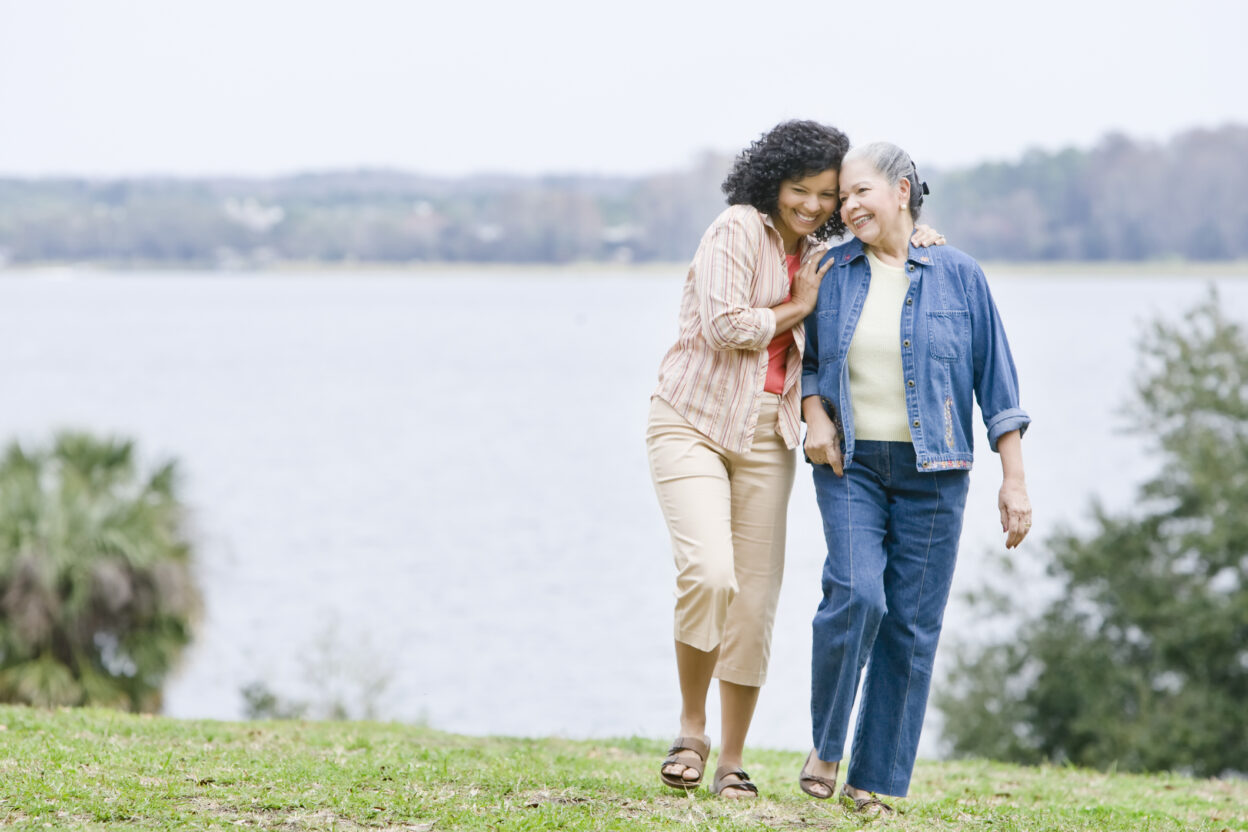Last Updated on April 2, 2025
Feelings are the lens through which we view the world. Learning to embrace the full spectrum of our emotions, both good and bad, is a key to active aging and adding more healthy years to our lives.
Emotional wellbeing is the ability to embrace our emotions, process them, and express ourselves. It can help us pull back and see the big picture, while also giving us strength to deal with any challenges we encounter. Dedicated practices can be grounding and help us learn additional strategies to improve our emotional wellbeing.
Strategies to Improve Emotional Health
1. Practice Gratitude
When we learn to focus more on what we have and less on what we lack, our entire world can change. According to the CDC, practicing gratitude has been shown to relieve stress, strengthen relationships, improve self-esteem, boost immune systems, and even impact physical health. Click here for a downloadable guide on keeping a gratitude journal, so you can start your journey to more healthy and happy years today.
2. Learn to Slow Down
Life can move at a seemingly unstoppable pace at times. Even as we age, the hustle and bustle of daily life can add stress, increase thoughts of frustration and despair, and impair our emotional wellbeing.
A great way to calm the mind and center our thoughts on our emotions is to literally “stop and smell the roses.” This idea has rapidly grown in popularity, leading to what has been called the “Slow Movement.” When we learn to live life instead of racing through it, we have more time to process what we are feeling in the moment and can act on our emotions, instead of ignoring them and letting them build up inside. 
3. Talk to Somebody
Talk to someone and share your journey. We can strengthen our emotional wellbeing when we lean on our support systems for help, and when we offer help back to those we love. If you don’t feel comfortable approaching a friend or family member, talk to a counselor. There are trained professionals all over the world who are empathetic, understanding, and ready to help you process your emotions.
4. Embrace an Emotional Outlet
The emotional spectrum can be overwhelming. Whether it’s pain and grief, or even an overflow of excitement from an unexpected happy event, we all can benefit from an activity that serves as an emotional outlet. When faced with overwhelming feelings, having a hobby like writing, painting, singing, playing sports, and crafting can alleviate stress. HumanaNeighborhoodCenter.com offers online classes, such as crafting a paper roll pumpkin. These activities help us get out of our heads and connect physically, increasing our endorphin levels and allowing us time to process intense emotions until they pass.
Emotional wellbeing can have an immense impact on extending our health span.1 Emotional resilience comes from the perspective and wisdom gained from life experience. It is a journey worth traveling and sharing with others as we embrace active aging.
Humana and the International Council on Active Aging are dedicated to helping you on your journey to whole-person health. Click here to download our complimentary Playbook for Active Aging: 7 Keys for Whole Person Health. Inside you’ll find more on the benefits of emotional wellbeing and tips on different ways to practice gratitude.
Ordinary People Living Extraordinary Lives
Mark Potter – Even Through Cancer, The Sun Still Rises
Retirement did not start the way the Potters hoped. Judith told Mark that if he was going to survive her cancer battle, he would have to leave the house for something beyond groceries and doctor appointments. In sharing gorgeous daily photos of the South Florida sunrise, Mark Potter found the connection and support he didn’t realize he so desperately needed for his emotional health.
“[The grief] doesn’t go away. It hits me every day. It’s part of your life. You realize if you’re grieving that much, you must have loved somebody a whole lot to be feeling that way. And I did. I think about her every sunrise. Every sunrise is inspired by her.”
Audrey Phillips – From Tragedy to Triumph
When Audrey was in her 30s, her mother was killed. This tragedy rocked her to her core. She was traumatized. No matter what medication, meditation, or therapy she tried, Audrey couldn’t process her pain and her grief. It wasn’t until a decade later, when she reconnected with her love of art, that she began to find a way back. She learned to process the painful emotions that had haunted her for years and is now a fine artist whose works can be found worldwide.
“My journey began as a healing process, not with the intention of me showing my work. It was totally just a journaling process to work through my emotions.”














